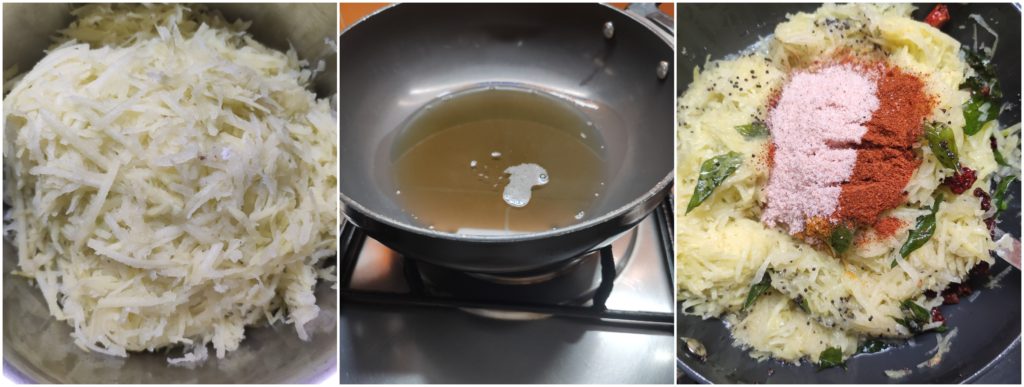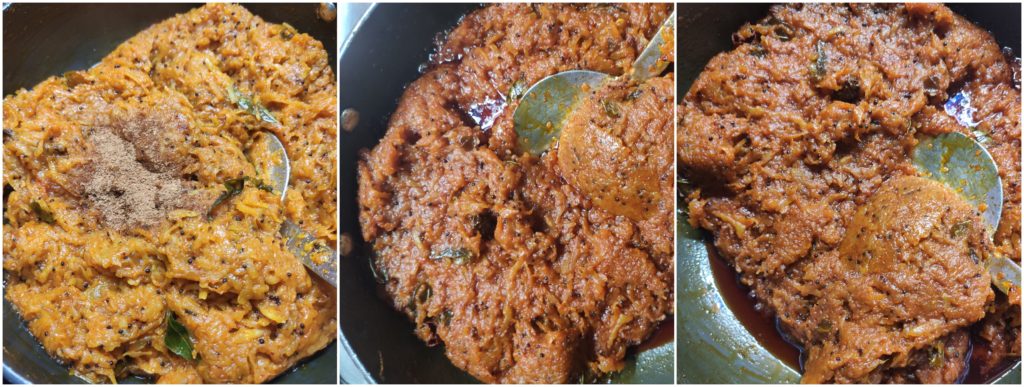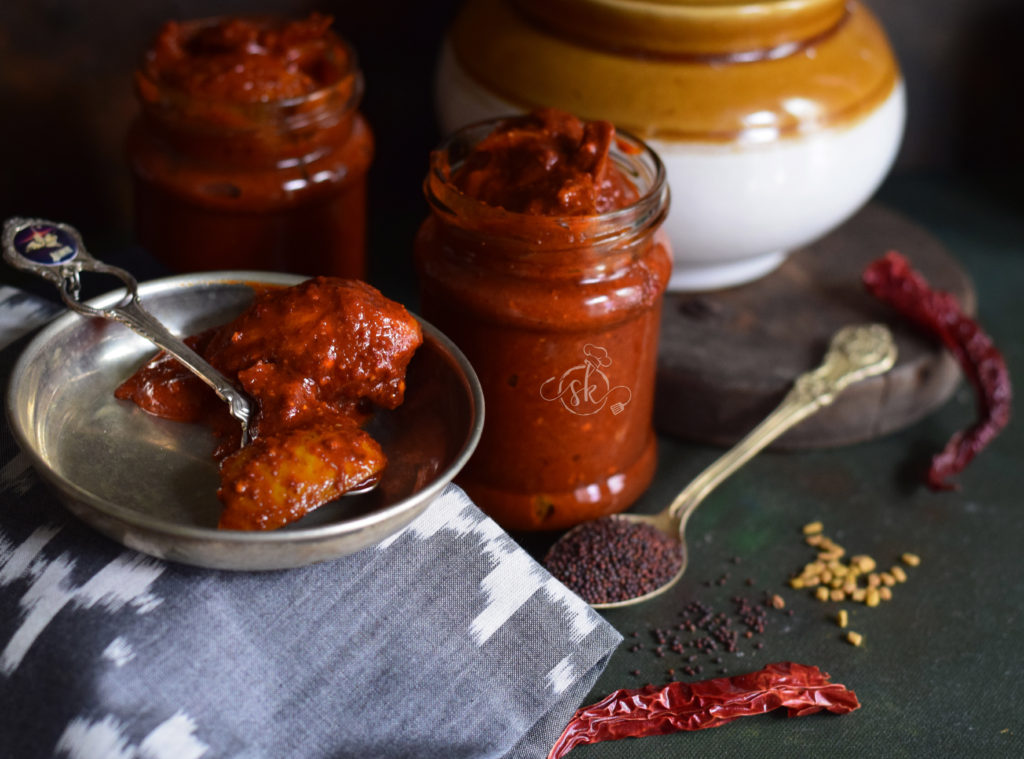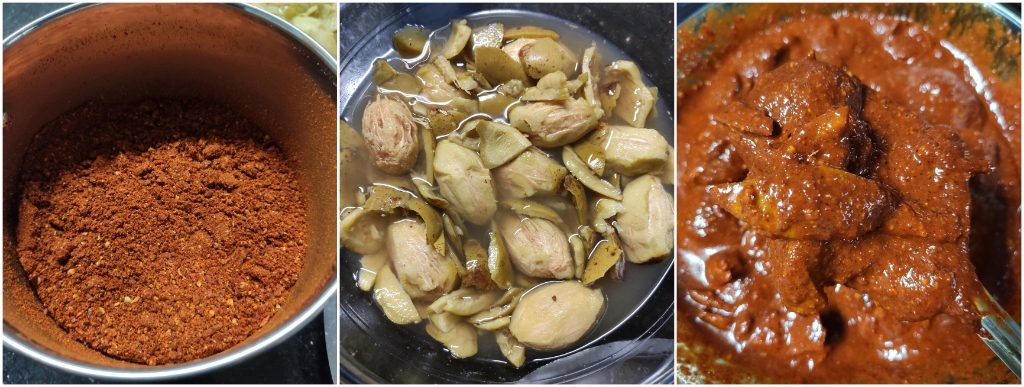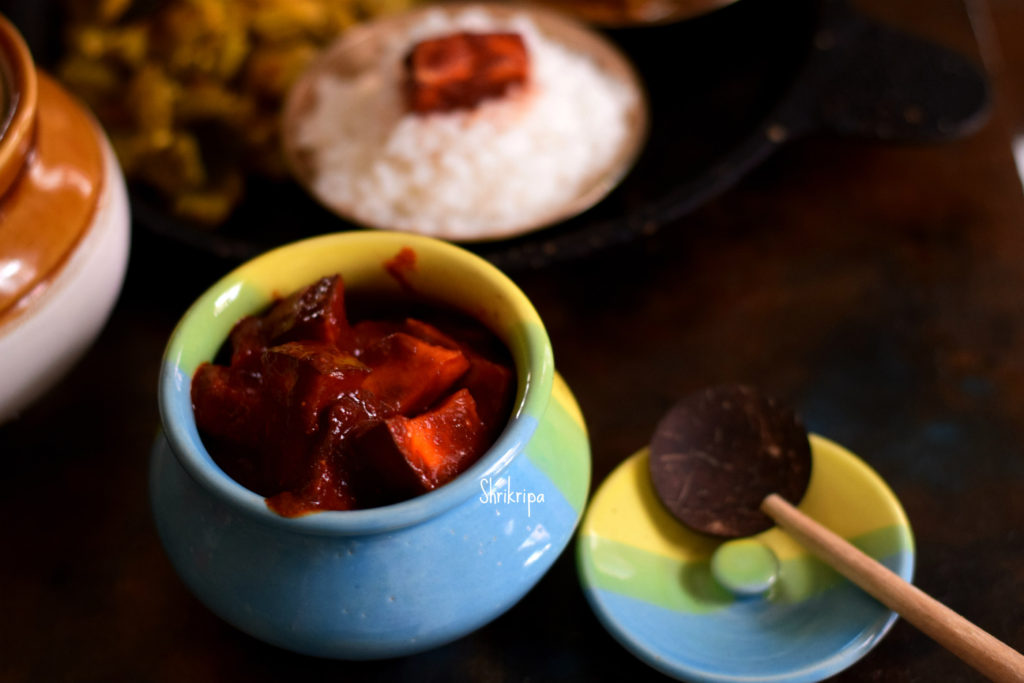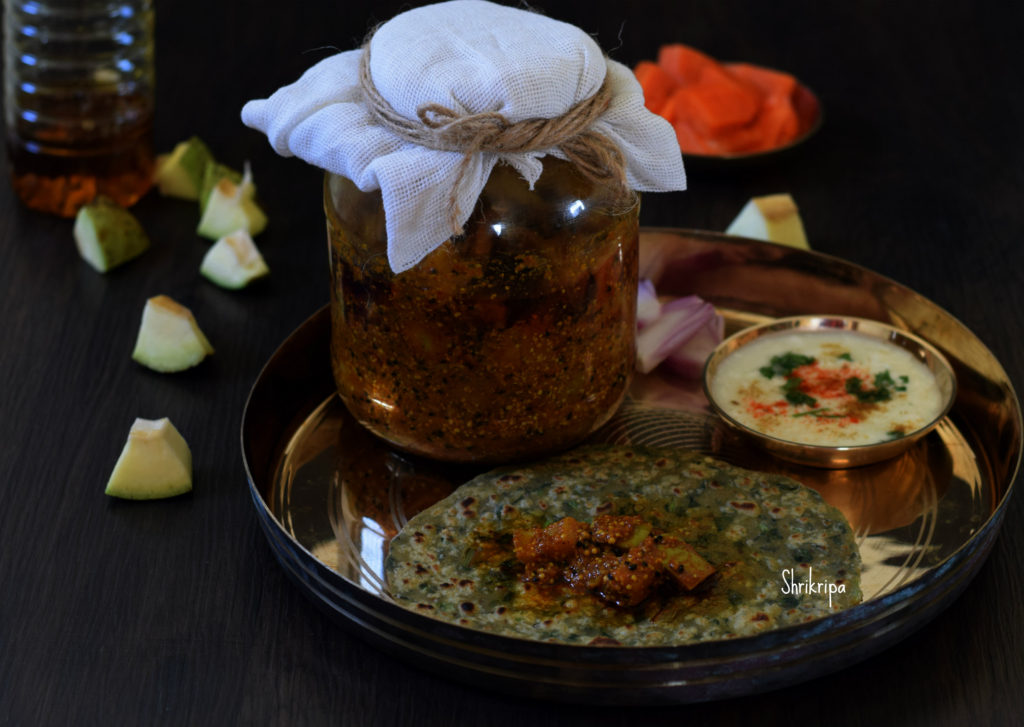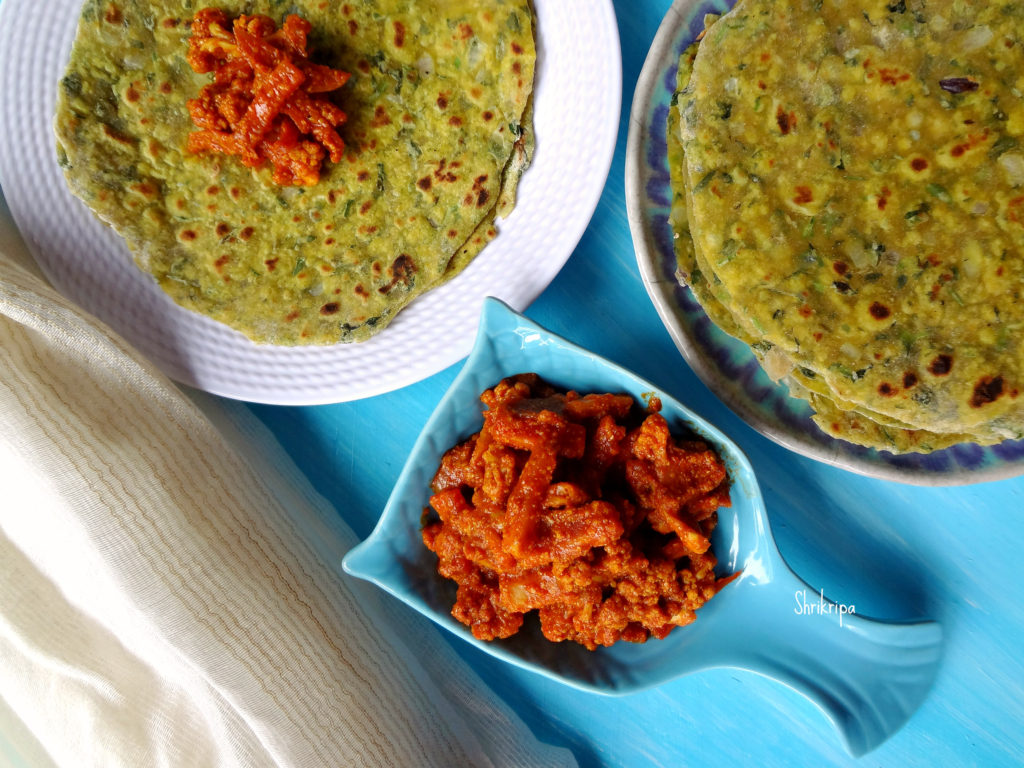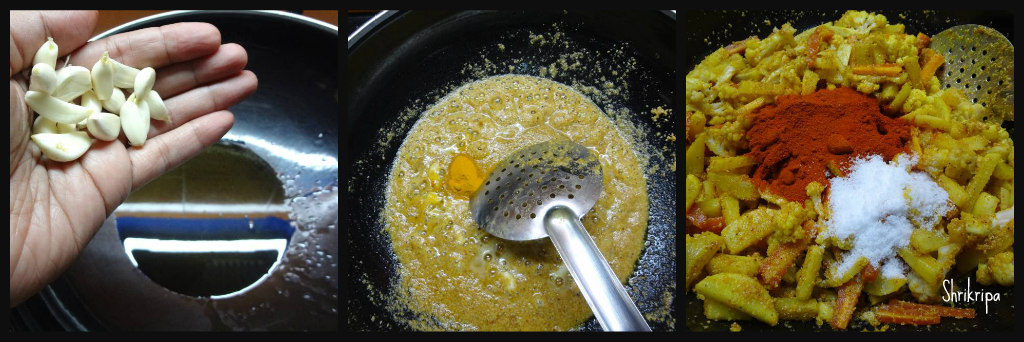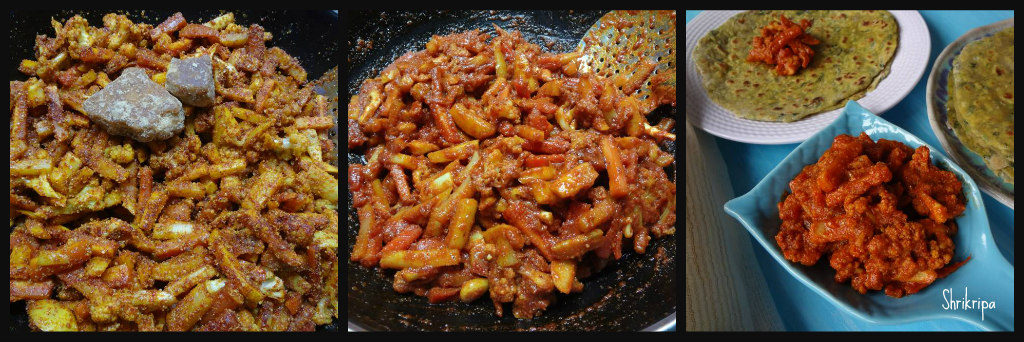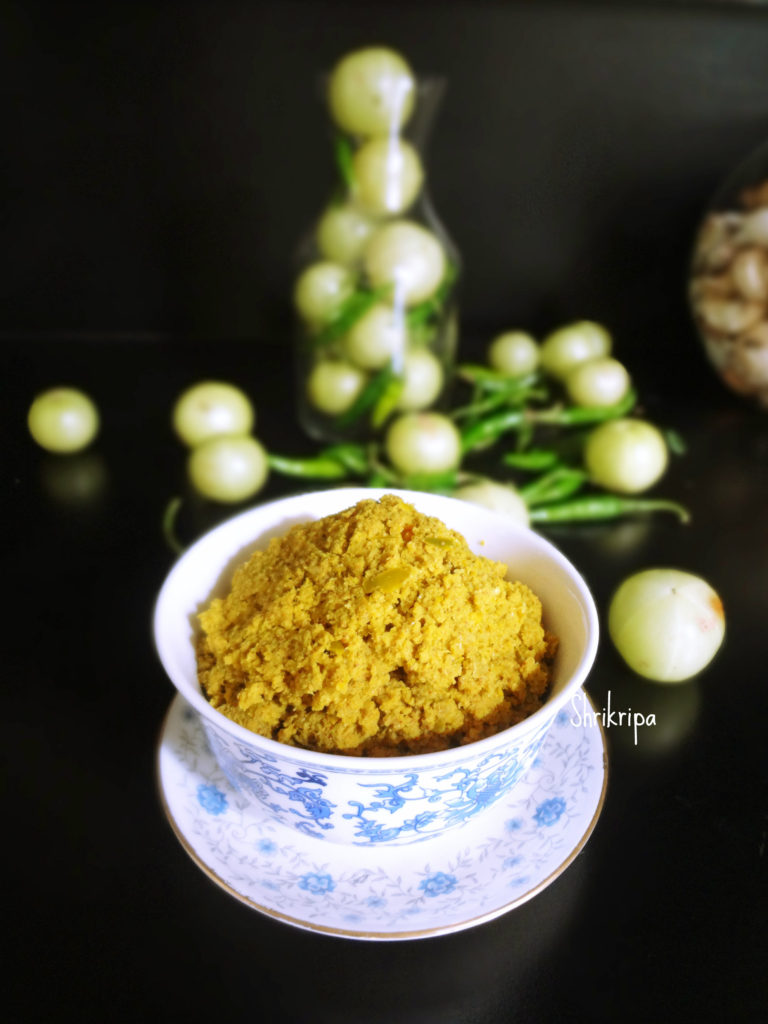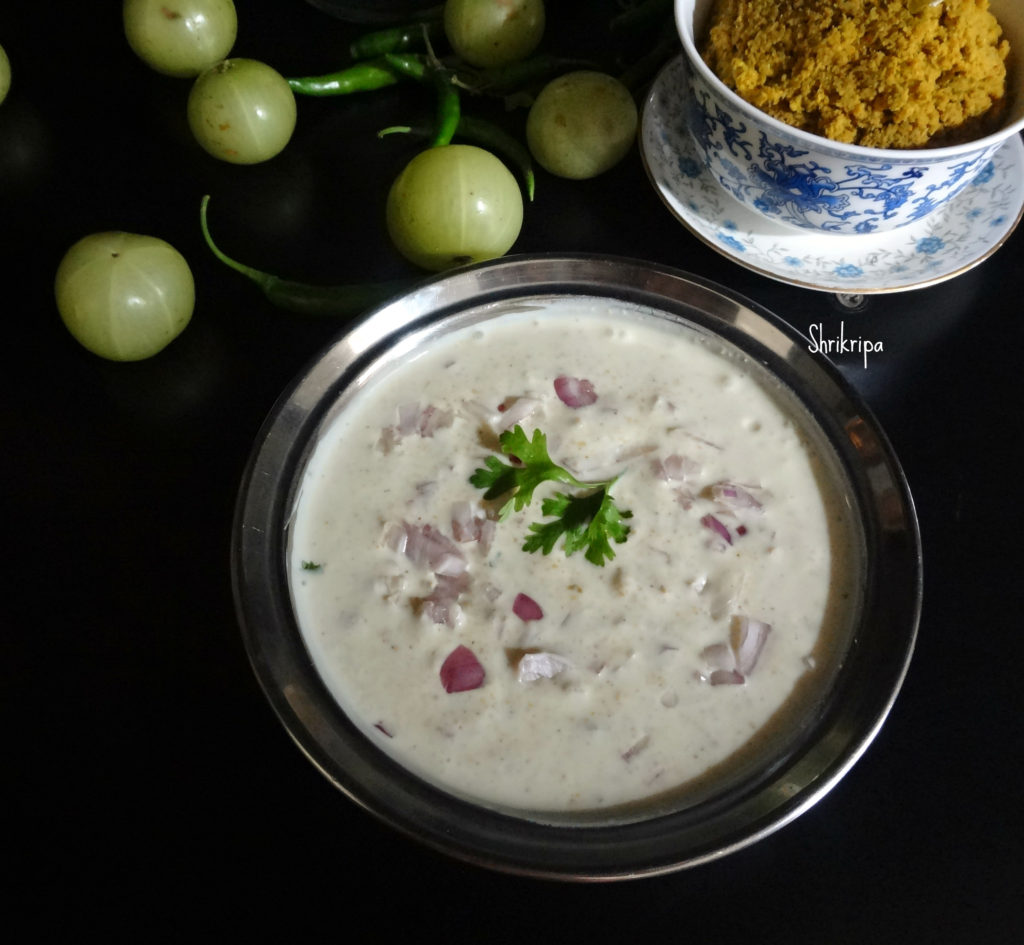Mangalore is known for tender mango pickle, locally known as “Midi uppinakai.” Unlike other pickles, it is made up of hardly any ingredient. It needs Dried chillies, mustard, turmeric and hing as an optional. The proportion of the chillies and mustard varies from family to family, hence the pickle’s taste.
The procedure is straightforward. First, after selecting a fresh, tender mango, the cleaning process happens, wiping, drying.
Then comes the pickling part; take a fist full of tender mango spread it at the bottom of the container, usually ceramic Bharani or glass jar. Then, a fist full of crystal salt. Repeat the process until mango reaches the brim of the bottle.
Mango shrinks within a couple of days, and the colour turns green to pale green. Now, it is time to make a pickle masala and finish the process. Isn’t it simple and straight forward 😀 It is one of the must condiments in our family. The recipe which I follow is handed down to me by my mother in law and stamped by my dear husband 😀
My father in law was very particular about the chilli usage, which he used to source after checking the freshness. The variety of chilli he used to prefer is called Harekala Menasu, a native variety of Mangalruru and cultivated in Harekala and nearby villages along the river Netravati. Chillies are spicy, fiery red when it is grounded, and smooth in texture.
As a city dweller, sourcing a tender mango within a short seasonal period becomes very difficult for me. Hence, I use the same masala and prepare cut mango pickle using freshly bought wild mangoes from my native. Instead of Harekala chillies, I opted for half Kashmiri chillies and half Byadagi variety. Hence, it worked out best for me.
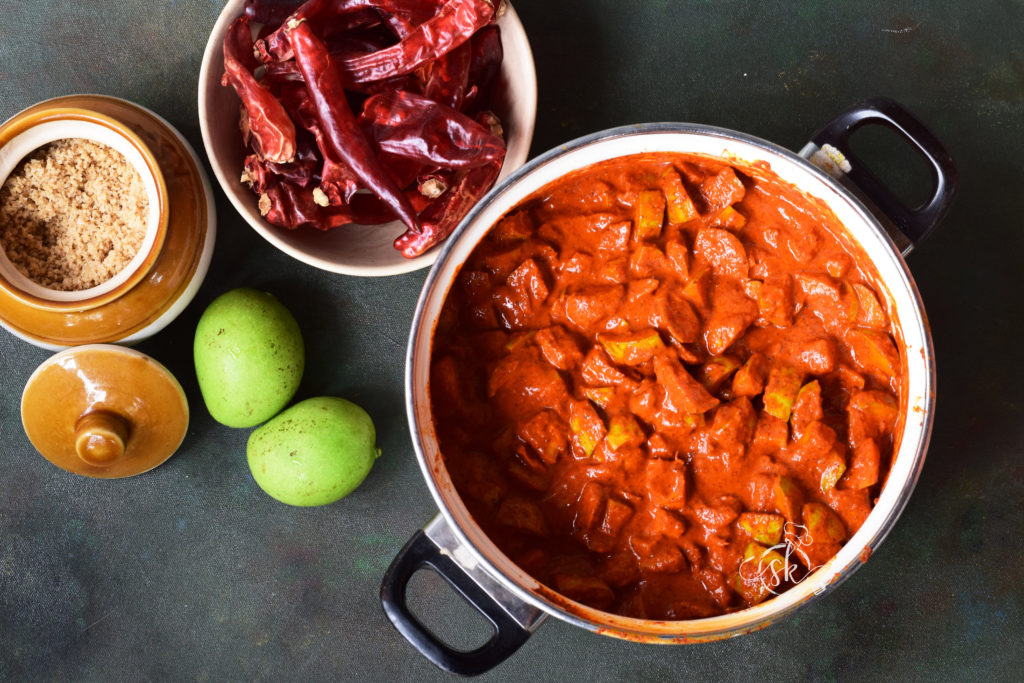
Ingredients:
Wild Mangoes – 15 (medium size)
Red chillies – 100 grams ( I have used 50 grams of Kashmiri chillies and 50 grams of Byadagi)
Mustard – 50 grams
Hing – small peanut size.
Turmeric – 1 to 2 tsp
Sea Salt – 1 cup(crystal)
Method:
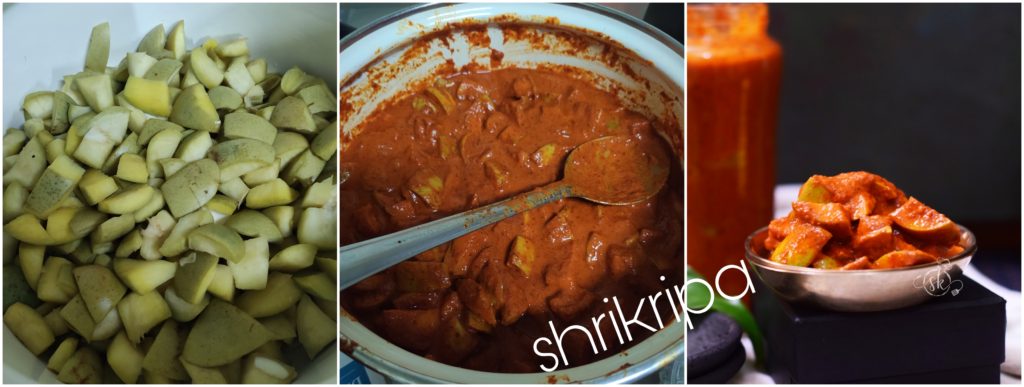
-Wash mangoes, wipe them, cut them into pieces.
-Take a porcelain jar or glass bottle, put a fistful of mango pieces at the base, sprinkle one tablespoon of salt.
-Again, put a layer of mango, then salt. Continue until mango pieces are over. Close the lid and keep it aside.
-Next day, mix everything and press a little and keep it until the skin becomes a little pale and wilted.
-When skin becomes pale, strain all the salted water, drain the content and collect the water.
-Now, it is time to prepare salted water. This flavourful drained water adds a little more salt and extra water to make boiled salted water. Boil nicely, remove skum, which appears at the top, strain the salty water, and cool it.
-Next comes the Pickle masala part: I usually prefer my wet grinder to make masala.
At first, Put mustard, red chillies and give a pulse in the mixer jar. When chillies and mustard become chunks, it is effortless to proceed in a wet grinder.
Put churned chillies, mustard, turmeric, hing and salted (cooled) water little by little and make a thick masala paste. When it is smooth and finely ground, remove the masala.
Add the required quantity of masala to wilted mango, adjust the consistency by adding salted water. Store it in a dry porcelain jar or bottle.
-If any extra masala or salted water is remaining, store it in a glass bottle. It can be handy to adjust the pickle after 2 or 3 days if needed. Or you can use the masala to make any instant pickle.
-After one week, you can start to use it, and this pickle stays good for a year or more. If the procedure handled well, you could keep it under room temperature, or you can keep it under refrigeration as well.

